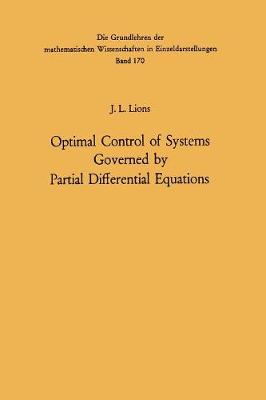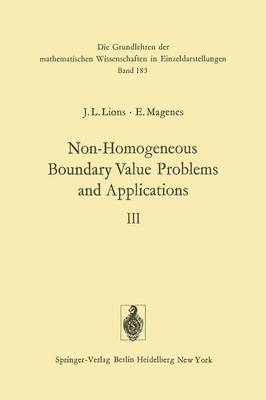Grundlehren Der Mathematischen Wissenschaften
3 primary works
Book 111
Dans un espace de BANACH H soit A(t) une famille d'operateurs non bornes, tE [0, TJ pour fixer les idees. On appelle equation difterentielle operationneUe (lineaire) une equation de la forme A(t)u(t)]u'(t) =f(t), la fonction f Hant donnee continue de [0, TJ dans H, la fonction u Hant une fois continument differentiable dans [0, TJ a valeurs dans H, u(t) appartenant a D(A(t)) (domaine de A(t)) pour chaque tE[O, T]. Les exemples les plus importants sont ceux Oll A(t) est un systeme differentiel, le domaine de A(t) Hant alors fixe par des conditions aux limites. Le probleme de CAUCHY consiste a trouver une solution de (*), verifiant la condition initiale u(O) = u, U donne (dans D(A(O))). o o Mais il est classique que, pour bien des applications, le probleme pose sous la forme precedente impose des conditions trop restrictives a u. Il faut introduire alors la notion de solution faible de ce probleme; il y a un tres grand nombre de telles notions; une classification en est donnee au Chap. 1. Les Chap. IV, V, VII, IX, X donnent diverses con- ditions suffisantes portant sur les A (t) pour que tel ou tel probleme faible admette une solution et une seule; on y Hudie la regularite de ces solutions, et les meilleurs domaines Oll l' on doit prendre les donnees initiales.
Book 170
Optimal Control of Systems Governed by Partial Differential Equations
by Jacques-Louis Lions
Published 12 November 2011
1. The development of a theory of optimal control (deterministic) requires the following initial data: (i) a control u belonging to some set ilIi ad (the set of 'admissible controls') which is at our disposition, (ii) for a given control u, the state y(u) of the system which is to be controlled is given by the solution of an equation (*) Ay(u)=given function ofu where A is an operator (assumed known) which specifies the system to be controlled (A is the 'model' of the system), (iii) the observation z(u) which is a function of y(u) (assumed to be known exactly; we consider only deterministic problems in this book), (iv) the "cost function" J(u) ("economic function") which is defined in terms of a numerical function z-+
Book 183
Non-Homogeneous Boundary Value Problems and Applications
by Jacques-Louis Lions and Enrico Magenes
Published 1 January 1972
1. Our essential objective is the study of the linear, non-homogeneous problems: (1) Pu = I in CD, an open set in RN, (2) fQjtl = gj on am (boundary of m), lor on a subset of the boundm"J am 1 v, where Pis a linear differential operator in m and where the Q/s are linear differential operators on am. In Volumes 1 and 2, we studied, for particular c1asses of systems {P, Qj}, problem (1), (2) in c1asses of Sobolev spaces (in general constructed starting from P) of positive integer or (by interpolation) non-integer order; then, by transposition, in c1asses of Sobolev spaces of negative order, until, by passage to the limit on the order, we reached the spaces of distributions of finite order. In this volume, we study the analogous problems in spaces of inlinitely dilferentiable or analytic Itlnctions or of Gevrey-type I~mctions and by duality, in spaces 01 distribtltions, of analytic Itlnctionals or of Gevrey- type ultra-distributions. In this manner, we obtain a c1ear vision (at least we hope so) of the various possible formulations of the boundary value problems (1), (2) for the systems {P, Qj} considered here.


